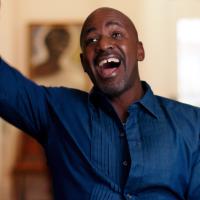How’s that saying go again…too many cooks?
That’s what Diane Tavenner, co-founder and CEO of Summit Public Schools, discovered was happening in her own kitchen.
Tavenner and her husband initially had a great idea: have their teenage son, Rett, cook one of the family’s meals per week. This would give them a night off and help Rett gain a pretty important life skill.
But, being pretty good cooks themselves, they soon found themselves not so much guiding Rett through the cooking process as much as doing things for him.
“We forgot what it was to be a novice,” Tavenner says, “and so, he would ask a simple question, and next thing you know, one of us is in the kitchen doing it for him. And he’s sort of standing back and on the side, and we realize we just took over, we weren’t actually supporting. We were just doing it for him.”
Pulling back, they gave Rett tips, but let him take charge.
“I had to take the initiative,” Rett says.
Sure, there were burnt dishes and some undercooked dishes, but there was also the chance to learn how to learn; a chance to improve by building off his mistakes.
As the weeks progressed, Rett saw his skills develop. He returned to recipes he cooked in the past, and saw how his techniques had gotten better— this family chore had turned into a real-world, edible aptitude test.
Tavenner, a former teacher, saw this “spoon-fed” approach to learning as being a problem not just in her family kitchen, but in the American educational system.
So, she created Summit Public Schools, a charter school system with a new approach to education: students have numerous opportunities to improve their grade.
What they don’t have? Assigned homework.
A New Recipe
It begins with the will to start something new.
“If we want to truly prepare our kids to have a chance to live their best life, we need to radically rethink the education we grew up with, and the message it’s sending,” Tavenner says.
To keep it in the kitchen, think of the traditional public education system as handing students a recipe and the ingredients.
The message is: here’s what you need to know and if you’re successful, you’ll get an “A” on your first test.
But in the real world, things aren’t so straight forward — so, Summit takes a different approach.
Students “have the ingredients, but we must learn how to make the recipe,” Rett, who was also a student at Summit, says.
“People can help you along the way with learning the recipes, but ultimately you must take center stage. That is what self-directed learning is.”
At Summit, students are given the opportunity to change a grade over time if they show continuous improvement.
By allowing students to continue working on subjects to improve their grades, Summit builds in the chance to “fail forward” — to learn from your mistakes. (Like, say, making sure to grease a pan the next time you cook.)
Each student is mentored weekly by an assigned teacher. The mentors stay with students throughout their academic career, providing continued support and offering parents a constant point of contact. According to Tavenner, research has found that mentoring improves a student’s sense of belonging and success beyond grade school.
Those mentors help kids actively engage in their hands-on, project-based work. Through these projects, students may design a house to put principles of geometry to work, grow their own plants, or build a model rocket.
“Project-based learning is real world learning,” Tavenner says. “Authentic learning. It’s the type of learning where kids are getting really hands-on. They’re asking big questions.”
In addition to its regular curriculum, Summit offers an eight week guided learning program where the students choose the field they’re interested in and get to ask the big questions they want to ask — a freedom not always found in the current public education system.
The foundation of all of this is giving students agency and autonomy in their educational journey.
“When you give kids responsibility, they become invested because they actually know that what they are doing means something and that it’s dependable and accountable and all of that leads to growth,” Rett says.
Finding the Ingredients
While attending Summit, Rett felt he had space to learn — the ability, and responsibility, to shape his learning in ways that best fit him.
Learning how to learn was one of the central aspects of my learning environment.
That environment allowed him to explore one of his passions: history. In one class, Rett and his classmates were split into eight groups representing different countries on the eve of World War I. Each country had its needs, goals, and certain rules to follow, but the students had the freedom to interact among themselves.
Pushing and pulling against each other made the events come alive: it stopped being just events and dates on a textbook page.
“I think I remember the causes and effects of World War I…far better than I would have if I were in a traditional environment,” he says.
Summit’s ten West Coast campuses have drawn plaudits from the tech industry, and earned her a seat on the board of trustees at the Carnegie Foundation for the Advancement of Teaching. The public charter schools are free to attend, with enrollments on a rolling basis.
Summit’s approach to education may not work for every student — and Tavenner says that’s ok. She says asking whether an approach to learning can be applied across the board to all students isn’t the right question to be asking.
“The question we should be asking ourselves is, ‘does what work? For whom? Under what circumstances?’” Tavenner says.
“And the power of those three questions is actually asking about each individual student.”



